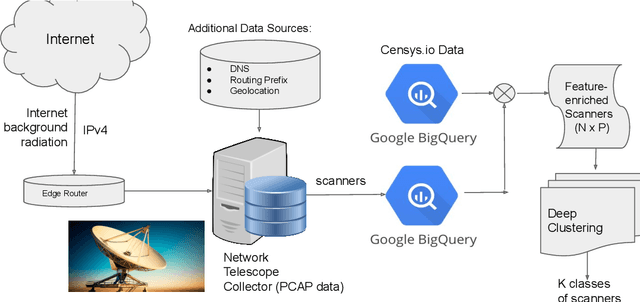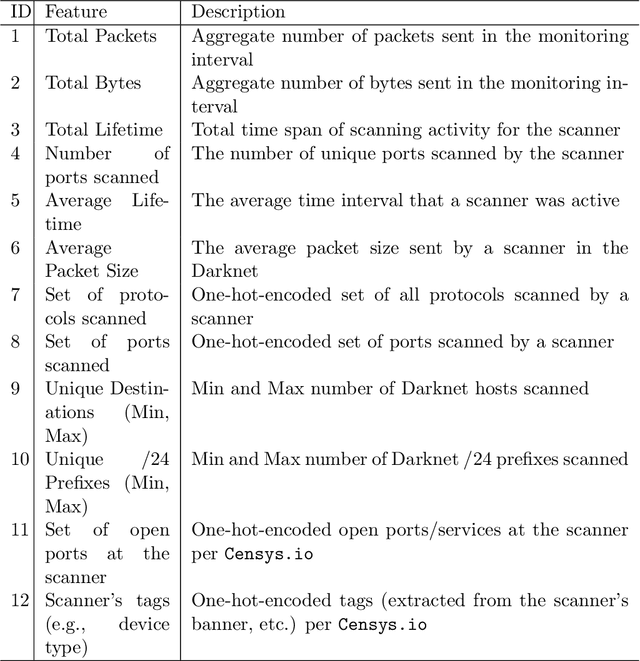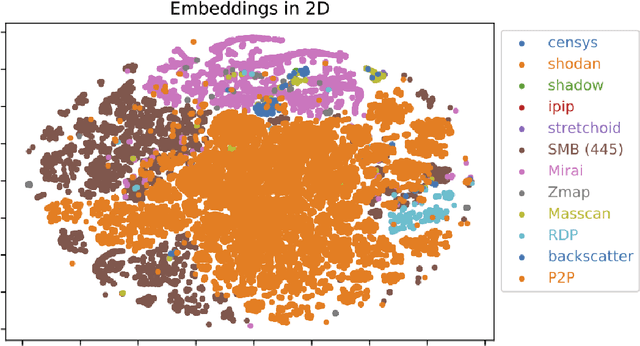Zooming Into the Darknet: Characterizing Internet Background Radiation and its Structural Changes
Paper and Code
Aug 05, 2021



Network telescopes or "Darknets" provide a unique window into Internet-wide malicious activities associated with malware propagation, denial of service attacks, scanning performed for network reconnaissance, and others. Analyses of the resulting data can provide actionable insights to security analysts that can be used to prevent or mitigate cyber-threats. Large Darknets, however, observe millions of nefarious events on a daily basis which makes the transformation of the captured information into meaningful insights challenging. We present a novel framework for characterizing Darknet behavior and its temporal evolution aiming to address this challenge. The proposed framework: (i) Extracts a high dimensional representation of Darknet events composed of features distilled from Darknet data and other external sources; (ii) Learns, in an unsupervised fashion, an information-preserving low-dimensional representation of these events (using deep representation learning) that is amenable to clustering; (iv) Performs clustering of the scanner data in the resulting representation space and provides interpretable insights using optimal decision trees; and (v) Utilizes the clustering outcomes as "signatures" that can be used to detect structural changes in the Darknet activities. We evaluate the proposed system on a large operational Network Telescope and demonstrate its ability to detect real-world, high-impact cybersecurity incidents.
 Add to Chrome
Add to Chrome Add to Firefox
Add to Firefox Add to Edge
Add to Edge